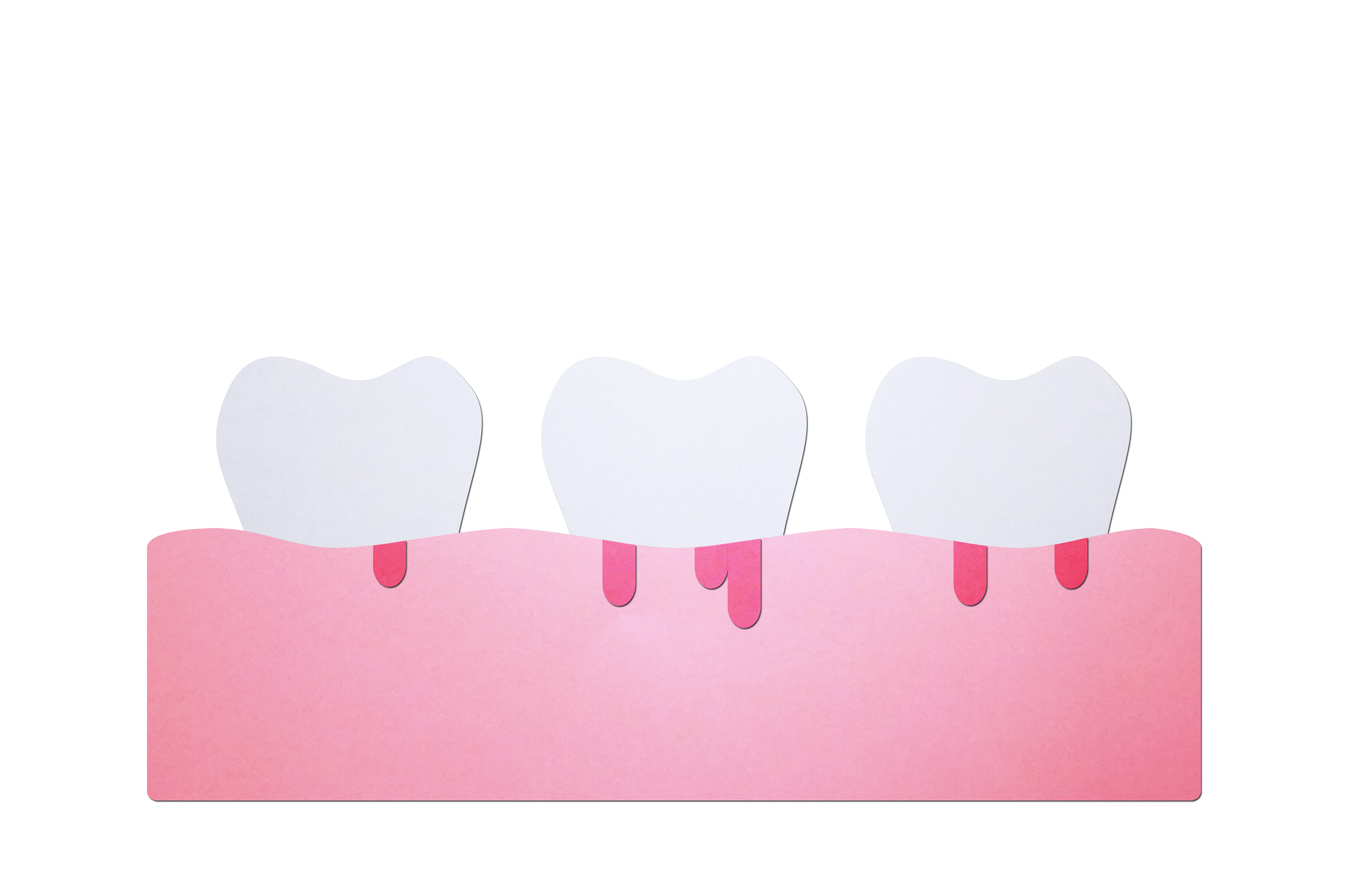Bleeding Gums
Bleeding Gums

Seeing a little blood in the saliva when brushing teeth or flossing is not uncommon. While it may not be anything to worry about, it should also not be ignored. Bleeding gums are normally a sign of gum disease or a range of dental problems.
A major problem with gum disease is that they are rarely painful and people often do not realize the extent of the problem until the bleeding becomes too much to be overlooked. At Unismile Dental we advise our patients to contact us as soon as signs of bleeding gums, swelling, redness, tenderness, receding gums or tooth sensitivity are observed. The earlier a gum problem is diagnosed and treatment begun, the more rapid the cure. In some cases, bleeding gums could be a symptom of a disease affecting some other part of the body and here too early treatment can result in the patient being referred to a specialist for treatment at the early stage of the problem if needed.
The Treatment
As with all dental conditions, at Unismile Dental we do not take anything for granted and provide a diagnosis only after the patient’s medical history has been studied and a thorough dental examination has been done. If the causes are dental, the patient is briefed about the condition and a treatment plan devised. In general, the basics of bleeding gum treatment involves the removal of plaque. As plaque builds up on the teeth it turns into tartar which is a hard rough substance that, when it comes into contact with the gums, causes irritation and bleeding and greatly increases the chances of infection.
People often use over-the-counter medications for bleeding gums. While these may work in some cases, it is always better to consult a dentist who will be able to investigate and understand the size and scope of the problem and offer the most effective treatment options.
Once the bleeding gums have been treated, we advise the patient on any special oral hygiene procedures that may be needed to prevent a recurrence of the condition.
Bridges
A dental bridge is used to fill the gap caused when one or more teeth are missing. A bridge is made of a crown at either end which anchors the bridge over healthy teeth and the false tooth or teeth in between, which are called pontics. Fitting a bridge will help to restore a patient’s smile and increase his or her self-confidence. But a bridge is more than just cosmetic. It serves many practical and medical purposes too. It can:
- Restore the ability to chew food properly
- Help a patient regain clarity of speech that may have been lost due to the missing teeth
- Help to maintain the shape and alignment of the jaw and the face, and prevent bone loss in the area of the missing tooth eventually affecting the adjacent teeth too.
- Prevent the gap between teeth causing adjacent ones to drift out of position
- Distribute the force of a person’s bite more evenly and so prevent nerve, muscle and tooth damage caused by uneven bite force.
How A Bridge Is Fitted
The process of fitting a bridge usually involves multiple visits to the dentist. At Unismile Dental we begin with a thorough examination of the patient’s dental condition and any past medical history. Based on this we recommend the best treatment option, which in the case of a missing tooth or teeth could be a bridge an implant or a removable partial. Our aim is always to maximize patient comfort, provide that most lasting solution and give the patient the best smile possible.
At the time of the first sitting the abutment teeth – the ones adjoining the gap - are prepared. This requires removing some of the enamel from them to re-shape them so that there is space for a crown to be fitted on these teeth. Once this has been done an impression is taken of the teeth which will be the model based on which the bridge, pontics, and crowns will be shaped and made in a dental laboratory. This may take some days so a temporary bridge is usually fitted to give the exposed teeth some protection.
On the next visit, the temporary bridge is removed and the new permanent bridge fitted. The fitting is carefully checked and any adjustments that may be needed are made.
In some cases multiple visits may be required to ensure that the fit is perfect – the number of visits will vary from case to case. In some instances, a temporary cementing of the bridge may be done to hold it in place for a few weeks, after which a final check is made and the permanent cementing is done.
While there is never a guarantee about how long a bridge will last, they are generally expected to last up to 15 years or more. A lot is dependent on maintaining good oral hygiene to prevent the crowns and the abutment teeth from getting damaged or becoming loose.
Types Of Bridges
- There are 3 main types of dental bridges and which one is fitted will depend on the specifics of each case.
- Traditional bridges use crowns on either side of the gap to anchor the bridge, as described above.
- Maryland bonded bridges (also known as resin-bonded bridges) are made plastic with a metal supporting frame. Metal projections at each end of the bridge are bonded to the existing teeth.
- Cantilever bridges are supported by natural teeth only at one end and are used in cases where adjacent teeth are available only on one side of the gap.